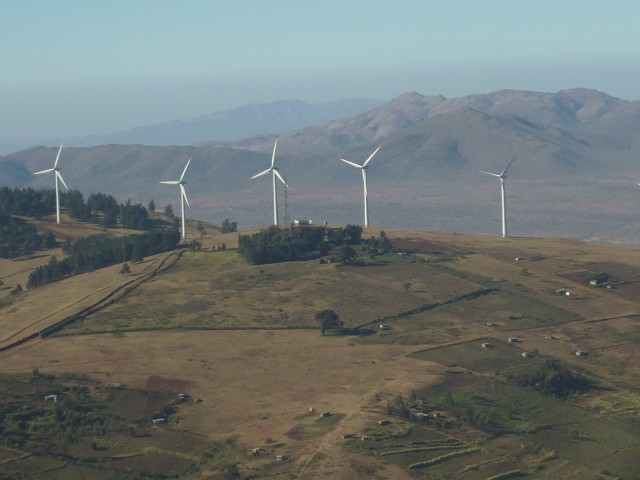Recent forecasts suggest that African countries must triple their current electricity generation by 2030. Our multicriteria assessment of wind and solar potential for large regions of Africa shows how economically competitive and low-environmental–impact renewable resources can significantly contribute to meeting this demand. We created the Multicriteria Analysis for Planning Renewable Energy (MapRE) framework to map and characterize solar and wind energy zones in 21 countries in the Southern African Power Pool (SAPP) and the Eastern Africa Power Pool (EAPP) and find that potential is several times greater than demand in many countries. Significant fractions of demand can be quickly served with “no-regrets” options—or zones that are low-cost, low-environmental impact, and highly accessible. Because no-regrets options are spatially heterogeneous, international interconnections are necessary to help achieve low-carbon development for the region as a whole, and interconnections that support the best renewable options may differ from those planned for hydropower expansion. Additionally, interconnections and selecting wind sites to match demand reduce the need for SAPP-wide conventional generation capacity by 9.5% in a high-wind scenario, resulting in a 6–20% cost savings, depending on the avoided conventional technology. Strategic selection of low-impact and accessible zones is more cost effective with interconnections compared with solutions without interconnections. Overall results are robust to multiple load growth scenarios. Together, results show that multicriteria site selection and deliberate planning of interconnections may significantly increase the economic and environmental competitiveness of renewable alternatives relative to conventional generation.
PublicationJournal Article Strategic siting and regional grid interconnections key to low-carbon futures in African countries
Published:
March 27, 2017
Author(s):
Publication Type:
Journal Article
Associated Projects:
Abstract:
